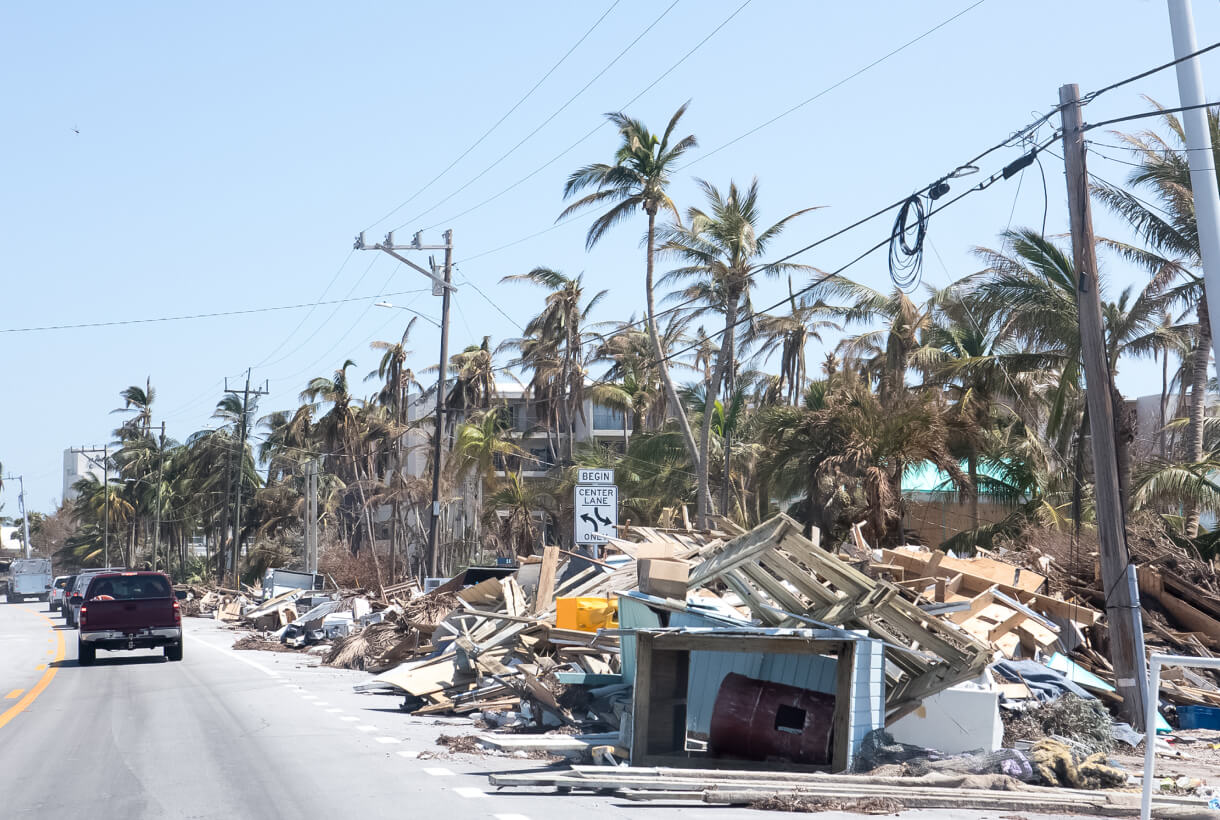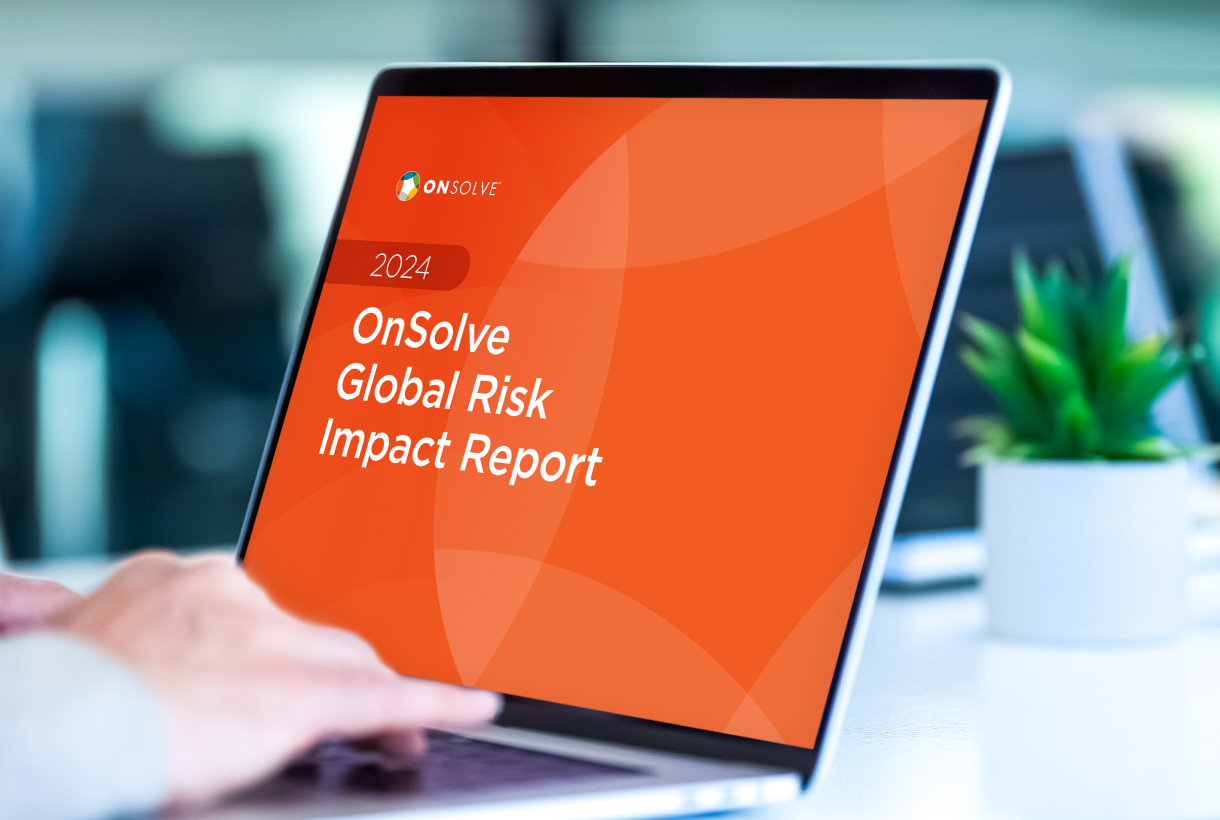We see it in the headlines every day — weather extremes and natural disasters continue to break records. Recently, USA Today reported that eight new $1 billion dollar disasters were confirmed in the U.S. in August, bringing the total so far in 2023 to a record 23 weather and climate disasters, per NOAA. These events put tremendous strain on organizations of every size, as well as federal, state and local government agencies.
And it’s important to remember that it’s not just the immediate consequences of a physical threat that are so challenging. Every physical threat—whether it’s a hurricane, wildfire, heat wave, hurricane, etc.—has the potential to cascade throughout the organization and wreak havoc in often-unexpected ways.
Consider the following: A hurricane’s high winds cause power outages that bring operations to a sudden halt. Dips in voltage damage a manufacturing plant’s controllers and work in progress, which creates a faulty product. Work-from-home employees face internet outages from the storm. Customer support goes offline and the company’s reputation (and potentially revenue) is negatively impacted.
This example illustrates how dynamic risk—where the ultimate harm is often different than the initially expected harm—can create a ripple effect that can negatively impact people and operations.
During this National Preparedness Month, it’s a good idea to take a closer look at your organization’s readiness for physical threats heading into 2024.
Expecting the Unexpected
At OnSolve, we’ve been leveraging our AI-powered Risk Intelligence to track physical threats, including weather and natural disasters, to gain a better understanding of trends and identify both known and emerging issues organizations face from these threats.
In our 2023 Global Risk Impact Report, we identified extreme weather as one of the top three rising global threats. According to the 2023 Report data, from 2021 to 2022, extreme weather events were up 42 percent in the U.S. and 72 percent globally. In the U.S., winter storms and blizzards were up 216 percent, while tsunamis (221 percent), flash floods (52 percent) and severe storms (138 percent) all increased in frequency.
With colder weather just around the corner for many parts of the U.S., the winter storm data trends are particularly concerning. A blizzard on a major national highway, for example, can halt traffic, stranding drivers in freezing temperatures for many hours. Travelers would be unable to reach their destinations, putting many at risk of hypothermia and medical emergencies as they run out of fuel and rescue teams are unable to reach them.
Preparedness is key. Yet understanding the ripple effect that physical threats have, particularly when it comes to severe weather and natural disasters, is one of the most challenging components facing leaders today.
The 2023 Report found that C-suite executives lack the knowledge, budget or strategic approach to manage crises. And although almost every CEO surveyed has dealt with at least one physical threat in the last three years, most still struggle to prioritize and plan for potential threats. Furthermore, every CEO surveyed believes their organization will face a physical threat at some point in 2023. Despite this, more than half of CEOs (60 percent) have no plan to address the most severe physical threats to their businesses.
Top 4 Takeaways for Leadership
Although physical threats might be inevitable, the loss and disruption they cause don’t have to be. When managing risk is a strategic imperative, C-suite executives can strengthen resilience and safeguard their people and assets. The report identifies four takeaways the C-suite should consider as they prioritize risk preparedness and planning among their corporate initiatives.
1. Recognize that employees and boards are concerned about physical threats.
More than half (51%) say employees have expressed more concerns about physical safety since the start of the COVID-19 pandemic. As physical threats become more frequent, boards are also more aware of the business risk — and noticing the gaps in preparation. Nearly all (99%) of CEOs say their boards have asked about plans to combat physical threats.
2. Understand that resilient organizations have a competitive advantage.
Investment in risk management planning can help organizations anticipate crises and mitigate the impact of the inevitable. Imagine the outcome if the executive team anticipates and plans for a potential hurricane and subsequent flooding of a key facility. Simply having the capabilities to switch operations to another location will allow business to continue — giving a leg up over the competition.
3. Learn from cybersecurity success stories.
CEOs can turn to cybersecurity leaders to help fortify their plans. These executives have been at the forefront of threat mitigation efforts and have experience using technology to gain a line of sight into threats. Although AI-powered technology can do the same for physical threats, only 26 percent of CEOs say they’ve invested in it to protect people and operations from physical threats (though an additional 48 percent are prioritizing such an investment in 2023).
4. Remember that CEOs must ensure ownership across the C-suite — or put the business at risk.
Although 38 percent of CEOs say preparing for physical threats is a top priority, 60 percent say they have no plan to prepare to address all of their most severe physical threats. C-suite executives are responsible for the success of their organization and the safety of their people, so failure to identify and plan for all physical threats is risky. As the success with cybersecurity shows, when risk mitigation and crisis response efforts come from the top, businesses are better able to stay ahead of threats.
For the latest insights on dynamic risk, download the 2024 OnSolve Global Risk Impact Report.


